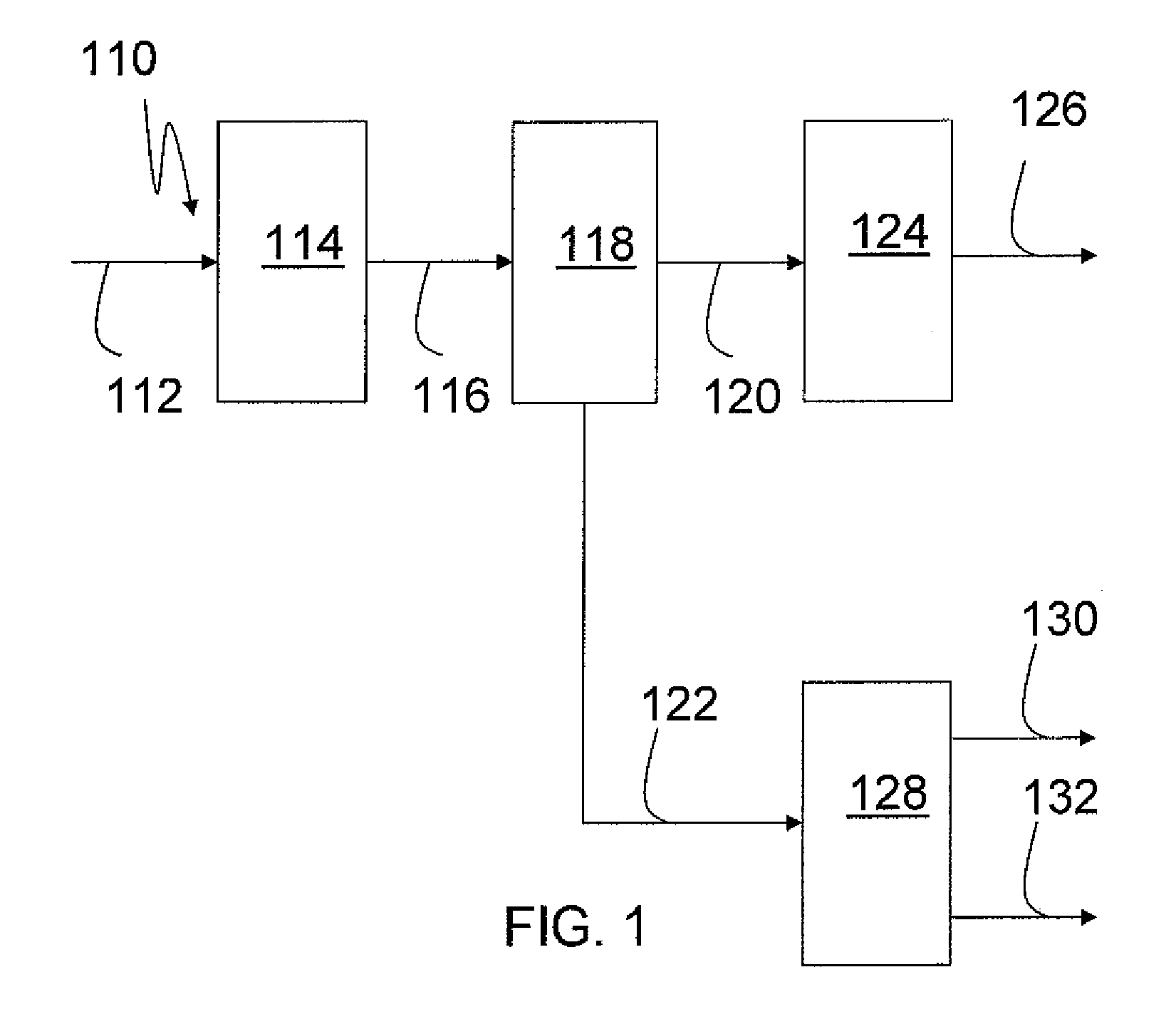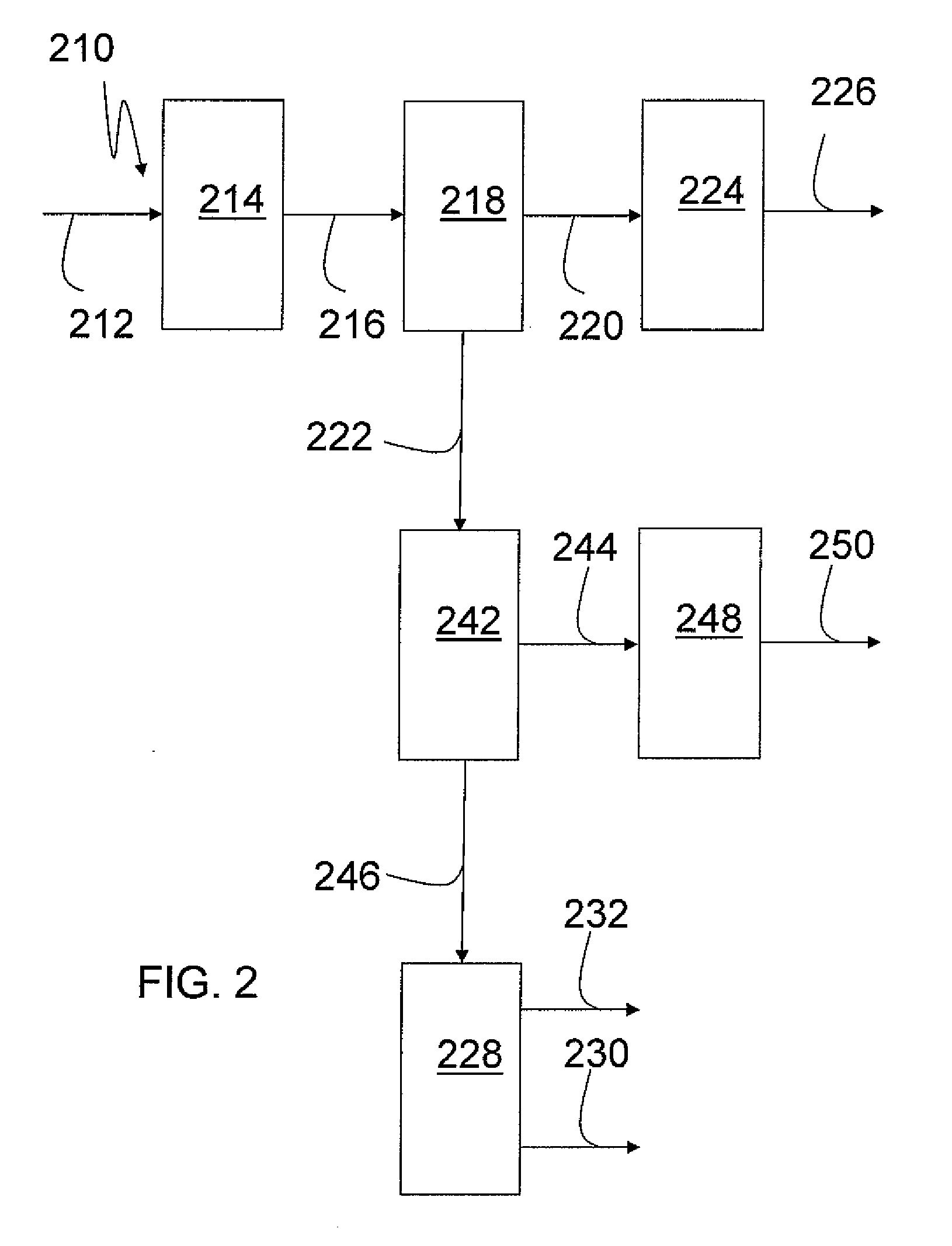Process, Plant And Butanol From Lignocellulosic Feedstock
- Summary
- Abstract
- Description
- Claims
- Application Information
AI Technical Summary
Benefits of technology
Problems solved by technology
Method used
Image
Examples
Embodiment Construction
[0018]The invention may cover or include a process of converting a lignocellulosic feedstock into hydrocarbons and / or oxygenated hydrocarbons for the use in biofuel applications, such as butanol.
[0019]The process may include extracting or removing pentose from the lignocellulosic feedstock, such as pentose originally in the hemicellulose part of the feedstock. The process may also include forming a pentose or sugar stream and a remainder, such as made of cellulose and lignin. The pentose stream can be converted into hydrocarbons or oxygenated hydrocarbons, such as using fermentation processes based on single cell organisms or microorganisms to butanol. The remainder may be used for a secondary step of conversion and / or burned for energy.
[0020]According to one embodiment, this invention focuses on the use of pentose (C5 sugars) for the production of biofuels by fermentation while hexose (C6 sugars) can be left in the material and either sent to the boiler for generating power used in...
PUM
| Property | Measurement | Unit |
|---|---|---|
| Energy | aaaaa | aaaaa |
Abstract
Description
Claims
Application Information
 Login to View More
Login to View More - R&D
- Intellectual Property
- Life Sciences
- Materials
- Tech Scout
- Unparalleled Data Quality
- Higher Quality Content
- 60% Fewer Hallucinations
Browse by: Latest US Patents, China's latest patents, Technical Efficacy Thesaurus, Application Domain, Technology Topic, Popular Technical Reports.
© 2025 PatSnap. All rights reserved.Legal|Privacy policy|Modern Slavery Act Transparency Statement|Sitemap|About US| Contact US: help@patsnap.com


